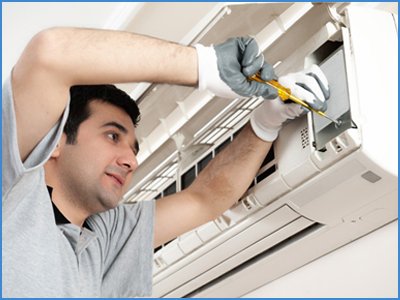Long ago, people used basic methods to stay warm or get fresh indoor air. As time went on, HVAC systems got fancier. Heaters, air conditioners, and ducts to move air around were introduced to make homes more comfortable. Even though HVAC systems were helping us stay cozy, they weren’t perfect.
Challenges like high energy consumption and expensive maintenance were the primary concerns. Over time, several innovations were made to make HVAC systems more eco-friendly, and HVAC Repair Miami Gardens services also got affordable, making air conditioning more popular than ever. Continue reading this article to learn about the unconventional evolution of HVAC systems.
Unconventional Evolution of HVAC Systems
-
Emergence of Sustainable Alternatives:
To tackle the challenges like higher energy bills, some systems started using the Earth’s natural heat to warm and cool homes. Others used sunlight to make things just the right temperature inside. People also started designing homes that used less energy without losing any comfort. These smart moves made HVAC systems more efficient and eco-friendly.
-
Integration of Renewable Energy Sources:
HVAC systems have joined the renewable energy revolution as the world seeks cleaner energy solutions. Some innovative systems now incorporate wind or hydropower to provide heating and cooling.
-
Thermal Energy Storage:
One unconventional aspect of HVAC evolution involves thermal energy storage. Imagine storing excess energy produced during off-peak hours and using it later when demand is high.
-
Waste Heat Recovery:
A substantial amount of waste heat is generated in industries and large buildings. Unconventional HVAC systems have tapped into this wasted energy by using it to heat water or other fluids. This heat recovery approach not only saves energy but also repurposes what would have otherwise been discarded.
-
Modular and Flexible Designs:
Unconventional evolution also means rethinking how HVAC systems are designed and installed. Modular systems that can be easily expanded or adjusted are gaining popularity. This approach aligns with sustainability goals, reducing waste and making it easier to adapt to different spaces.
-
Smart HVAC Technology:
Guess what? HVAC systems got smarter. Today, it’s possible to control them from far away. Smart thermostats, connected through the Internet of Things, empower users to manage their HVAC systems remotely. These cool thermostats can talk to the internet and learn when we like it warmer or cooler.
-
Collaborative HVAC Networks:
Unconventional evolution extends beyond individual systems to collaborative networks. In certain setups, buildings or units can share heating or cooling resources based on demand.
-
Integration with Building Design:
Designing buildings with HVAC in mind from the start is an unconventional but effective approach. Architects and engineers now consider HVAC systems integral to the overall building design. It means incorporating natural ventilation, shading, and insulation strategies right from the planning phase.
-
Biophilic HVAC Design:
Nature is awesome and can help us with HVAC too. Biophilic HVAC design integrates natural elements like greenery, natural light, and airflow into system planning.
Final Reflection
Looking back at the journey of HVAC systems, it’s clear that they’ve come a long way from basic methods of staying comfy indoors. At first, HVAC systems were great, but they had problems like using too much energy and being expensive to take care of. However, these challenges have been overcome over time with some really cool ideas.
Moreover, the availability of Near by HVAC Repair Miami Gardens services at reasonable prices has also played its role in making life convenient and hassle-free. Today, you don’t have to worry about unexpected air conditioning failure, as specialized HVAC services are just a call away from you.

